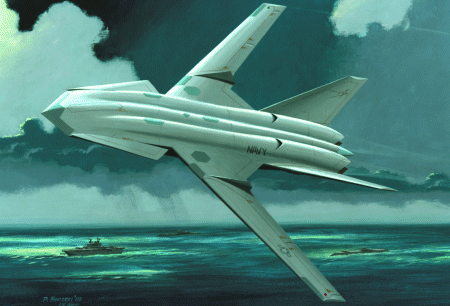Paul Lewis/FORT WORTH
Lockheed Martin expects the US Navy to eventually deploy a family of shipboard unmanned aerial vehicles (UAV) following its on-going study of a Multi-Role Endurance (MRE) vehicle capable of providing intelligence, surveillance reconnaissance and targeting.

The company is looking at three MRE variants capable of operating from an aircraft carrier, amphibious warfare helicopter carrier and smaller warships such as a destroyer. The carrier version concept is a stealthy design with a high aspect ratio wing for extended endurance.
Similar MRE contracts have been awarded to Boeing, General Dynamics and Northrop Grumman. The USN wants to field an MRE around 2010 as a follow-on to the Northrop Grumman developed FireScout rotary-wing Vertical Tactical UAV. The study phase will be completed in February.
John Kitowski, Lockheed Martin staff specialist, systems engineering - weapon system definition, says: "Each variant poses unique basing situations with catapult, short deck and vertical launch and recovery. Vehicle size will depend on basing, with the aircraft carrier version typically a little larger and vertical take-off and landing the smallest."
The MRE would be capable of carrying a 450-900kg (1,000-2,000lb) modular mission payload with radar, electronic surveillance and electro-optical/infrared sensors. The USN requires an all- weather capability to perform a variety of missions, including fire support for the USN's next generation destroyers, bomb damage assessment and mine detection for ground forces.
Lockheed Martin is also exploring how to arm an MRE, although this is not a core requirement. "It wouldn't be specifically the UCAV [unmanned combat air vehicle] mission, but a tertiary mission able to pin down a target until a dedicated strike platform is available," says Kitowski.
Lockheed Martin is also looking at enabling technologies that could be fed into MRE and possibly other UAV studies now underway.
Two NASA-funded Lockheed Martin projects are focused on developing new innovative flight controls for different-shaped unstable vehicles and improving reliability by combining vehicle and mission management and health monitoring systems. "The goal is to make a UAV as reliable as a manned aircraft, where as right now they're at least two orders of magnitude worse," says Allan Hill, supportability specialist.
Source: Flight International



















